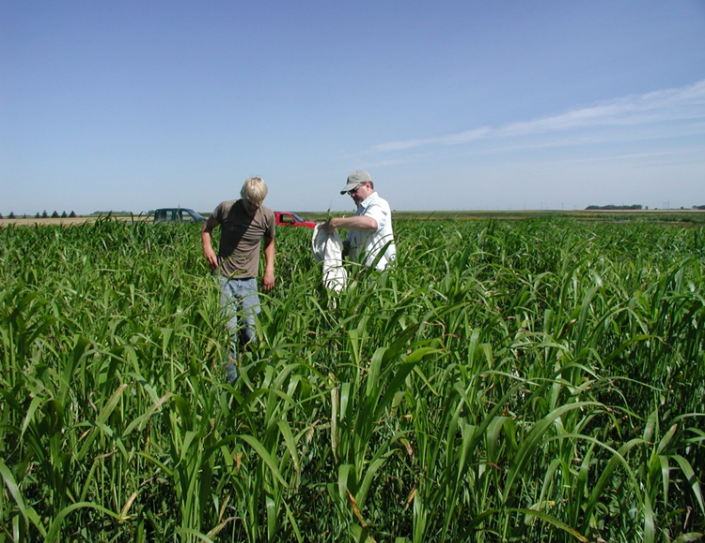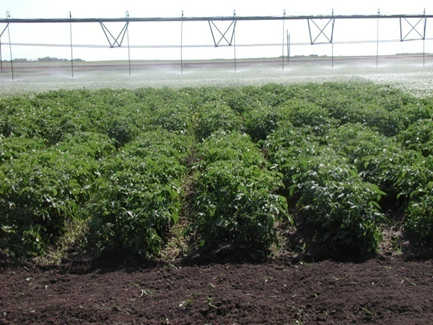Organic Cover Crop and Manure Management
A field trial to examine organic cover crop management in combination with animal manure application was conducted from 2007-2011 at the CREC. While this may seem like old data, it’s not! In terms of soil health development, immediate management changes have long-lasting effects.
A full-season cover crop was grown in 2007 to establish the 5-year trial. The cover crop, planted June 7, included a mixture of oats, buckwheat, field peas, and turnips. The cover crop was hayed and bales were removed on August 22, and the green manure treatments were established when the standing crop was disked twice on August 24. The amount of biomass in all treatments was determined to be 3.2 ton/ac DM. Livestock (feedlot cattle) manure applications occurred on August 23 at a rate of 8.3 ton/ac DM.
 Biomass sampling in the 2008 organic cover crop manure timing trial.
Biomass sampling in the 2008 organic cover crop manure timing trial.
Table 1 lists the manure treatment descriptions for this trial.
Table 2 lists crop information for each of the years the trial was conducted.
Table 1. Manure treatments
GM green manure cover crop terminated by disk
GM/MAN green manure cover crop terminated by disk with livestock manure application
HAY hayed cover crop
HAY/MAN hayed cover crop with livestock manure application
Table 2. Trial information by year
|
Year |
Crop |
Variety |
Planting date |
Harvest date |
|
2007 |
cover crop |
various |
7-Jun |
various |
|
2008 |
potatoes |
Kennebec |
8-May |
10-Sep |
|
2009 |
wheat |
FBC Dylan |
8-May |
24-Aug |
|
2010 |
oats |
Morton |
27-Apr |
2-Aug |
|
2011 |
peas |
Shamrock |
4-May |
5-Aug |

2008 potatoes in cover crop manure trial.
Differences were detected in potato yields in 2008. The green manure/livestock manure treatment #1 yield was significantly higher than the treatment that hayed the cover crop and did not have a manure application. Total yield followed the same trend although was not statistically significant. The 2008 potato crop was the only irrigated crop in the trial.
Differences in yield and quality were detected in the 2009 wheat crop. Treatments that included manure tended to have a yield advantage and a small increase in grain protein.
Performance of oats in 2010 followed the same trend with the highest yields from the green manure/livestock manure treatment followed by the green manure (only) treatment.
No significant differences in yield were detected in field peas during the final year of this rotational trial. The same trend was evident with pea yields as the green manure/livestock manure treatment had a higher yield compared to the other treatments, but statistically the difference was small.
This trial was conducted on a research field that began transition to organic production in 2004 with the last prohibited substances applied in August 2004. The 2008 potato crop was the first certified organic crop from this field.
Despite slight differences in performance between treatments, this trial illustrates the lasting effect that agronomic practices such as green manure and livestock manure application can have on production in an organic system.
Steve Zwinger
Steve.Zwinger@ndsu.edu
Agronomy Research Specialist


